Top 10 "Must-Visit" Vietnamese Villages for Cultural Exploration
In this article, we'll embark on a captivating exploration of some of Vietnam's most enchanting rural villages, each offering a glimpse into the soul of this remarkable nation. From the terraced rice fields of Sapa to the charming pottery workshops of Bat Trang, join us as we uncover the hidden gems and cultural treasures that await in Vietnam's rural heartland.
Content
Nestled amidst the verdant landscapes and picturesque vistas of Vietnam lies a treasure trove of cultural heritage and natural beauty: Vietnam villages. These quaint settlements offer a unique insight into the traditional way of life of the Vietnamese people, from their rustic architecture and culinary delights to their vibrant festivals and timeless customs. As one ventures beyond the bustling cities and urban centers, a world of tranquility and authenticity unfolds, inviting travelers to embark on a journey of discovery through Vietnam's countryside.
In this article, we'll embark on a captivating exploration of some of Vietnam's most enchanting rural villages, each offering a glimpse into the soul of this remarkable nation. From the terraced rice fields of Sapa to the charming pottery workshops of Bat Trang Village, Vietnam, join us as we uncover the hidden gems and cultural treasures that await in Vietnam's rural heartland. Discover the serene beauty of Son Trach Village, Vietnam, the traditional charm of Yen Duc Village, Vietnam, the rustic allure of Bamboo Village, Vietnam, and the picturesque landscapes of Ta Van Village, Vietnam. Let's dive into the rich heritage and vibrant cultures that make these villages truly special.
Beyond pottery-making, Bat Trang offers a glimpse into rural Vietnamese life, with ancient temples, traditional houses, and bustling markets lining its pathways. Visitors can immerse themselves in the village's vibrant atmosphere, exploring centuries-old traditions and sampling local delicacies at charming cafes and eateries.
Surrounded by mountains and forests, Ta Van village possesses a peaceful beauty that makes anyone who comes here never want to leave. This is where the Mong, Red Dao and Giay ethnic people live. Not only is the scenery unique, the village also possesses many unique cultural features that attract tourists everywhere.
Duong Lam ancient village is a long-standing ancient village with many unique cultural features. To this day, the village still retains the basic characteristics of an ancient village with village communal houses, banyan trees, water wharves, pagodas and temples... and 956 traditional houses. It can be said that the artistic value here has made Duong Lam a highlight when traveling to Hanoi.
Coming to Duong Lam, you will not only visit ancient architectural works and explore unique traditional culture, but you will also enjoy countless unique delicacies, imbued with the flavor of Northern Vietnamese villages.
Closing the journey to discover Van Phuc traditional craft village, visitors will certainly have wonderful experiences about Van Phuc silk making with the artisans here. If you love and want to learn about the cultural beauty of Hanoi about silk weaving, Van Phuc silk village is an interesting destination for tourists.
Visiting Yen Duc, in addition to visiting the natural landscape, historical and cultural relics, visitors also have the opportunity to go into people's homes to learn about traditional house architecture, family traditions, and customs. Ancestor worship, community cultural activities (festivals, folk songs, folk dances such as cheo, quan ho, puppet shows...), learn about fan making, broom making and experience life Village-style agricultural life (mainly self-sufficient) through gardening, fruit and vegetable harvesting, fishing, crab hunting, snail catching... An interesting point is that visitors can ride their own bicycles to enjoy themselves. Breathe in the fresh air, inhale the smell of new rice, cross straight roads lined with areca trees or weave through small alleys that can only fit a bicycle.
Every year on the 10th day of the first lunar month, people in Phu Mau commune beat drums and flags to organize the Sinh village wrestling festival. This is a cultural beauty that has existed for more than 400 years, since the time of Lord Nguyen. This festival attracts a large number of tourists to attend.
My Khanh Tourist Village is a resort - entertainment - culinary - ecotourism complex with all the characteristics of the Southern river region. Tourists coming here can experience visiting Southern ancient houses, visit traditional craft villages, experience fruitful orchards or listen to the sweet melody of amateur folk music of Southern people.
Visit Tra Que vegetable village - One of the interesting tourist destinations in Hoi An, don't miss the opportunity to experience the work of a true farmer. You will be guided from A-Z by local people and meticulously introduced to how to till the soil, sow seeds, water plants and harvest vegetables.
One of the highlights of a visit to Cat Cat Village is the opportunity to witness the local craftsmanship firsthand. Here, you can observe skilled artisans weaving intricate patterns into colorful textiles using traditional looms, creating stunning pieces of clothing and handicrafts that reflect the cultural identity of the H'mong people. In addition to its natural beauty and cultural significance, Cat Cat Village also offers a chance to experience the warm hospitality of the local residents. You can immerse yourself in the daily life of the villagers, learning about their customs, traditions, and way of life.
Vietnamese villages offer a unique perspective on the traditional lifestyle of the Vietnamese people, including their architecture, cuisine, festivals and customs. Whether you're fascinated by history, culture or simply want to soak in the stunning scenery, a visit to a Vietnamese village promises to dazzle your senses.
From the ancient streets of Duong Lam to the watery countryside of My Khanh, each Vietnamese village offers unique and unforgettable experiences, inviting visitors to step back in time and immerse themselves in the rich tapestry of Vietnamese culture and traditions. Whether you love pottery, silk weaving or simply seek serenity amid breathtaking scenery, a visit to these villages promises to be a journey of discovery and enchantment.
In this article, we'll embark on a captivating exploration of some of Vietnam's most enchanting rural villages, each offering a glimpse into the soul of this remarkable nation. From the terraced rice fields of Sapa to the charming pottery workshops of Bat Trang Village, Vietnam, join us as we uncover the hidden gems and cultural treasures that await in Vietnam's rural heartland. Discover the serene beauty of Son Trach Village, Vietnam, the traditional charm of Yen Duc Village, Vietnam, the rustic allure of Bamboo Village, Vietnam, and the picturesque landscapes of Ta Van Village, Vietnam. Let's dive into the rich heritage and vibrant cultures that make these villages truly special.
Top 10 Must-Visit Vietnamese Villages for Cultural Exploration
Bat Trang Pottery Village
Nestled southeast of Hanoi's bustling center lies Bat Trang pottery village, a living testament to Vietnam's rich cultural heritage. For over seven centuries, artisans here have honed their craft, creating exquisite pottery that reflects the nation's artistic prowess. Walking through Bat Trang's narrow streets, visitors are greeted by the sight of skilled artisans shaping clay on the wheel and hand-painting intricate designs onto delicate pottery. Each piece tells a story of craftsmanship passed down through generations, preserving Vietnam's rich cultural heritage.Beyond pottery-making, Bat Trang offers a glimpse into rural Vietnamese life, with ancient temples, traditional houses, and bustling markets lining its pathways. Visitors can immerse themselves in the village's vibrant atmosphere, exploring centuries-old traditions and sampling local delicacies at charming cafes and eateries.
Ta Van Village
Ta Van village is a small village in Ta Van commune, Sapa district, Lao Cai province, about 12km from Sapa town center - a quite close distance so it is very convenient for tourists' travel journey. Ta Van village has a terrain leaning against the majestic Hoang Lien Son mountain range and the front facing the clear winding Muong Hoa stream.Surrounded by mountains and forests, Ta Van village possesses a peaceful beauty that makes anyone who comes here never want to leave. This is where the Mong, Red Dao and Giay ethnic people live. Not only is the scenery unique, the village also possesses many unique cultural features that attract tourists everywhere.
Sa Dec Flower Village
Sa Dec Flower Village, nestled in Dong Thap province, is a floral haven just 140 kilometers from Ho Chi Minh City. Spanning 500 hectares, it's famous for its vibrant blooms and stunning panoramas of flowers, herbs, and bonsai.
Visitors flock here, especially in December by the lunar calendar, to see the flowers in full bloom for New Year festivities. Enjoy a sea of colors from roses to chrysanthemums and a fragrant ambiance.
Explore attractions like the historic Huynh Thuy Le Ancient House and the tranquil Kim Hue Pagoda. Experience Vietnam village life and the charm of a Vietnam French village. Sa Dec Flower Village offers an enchanting escape into Vietnam's natural and cultural beauty.
Duong Lam Ancient Village
Nestled in Son Tay district, Hanoi, Duong Lam Ancient Village offers a captivating journey into Vietnam's past. Just 44 kilometers from the city center, this historic village boasts well-preserved houses, ancient temples, and rich cultural traditions.Duong Lam ancient village is a long-standing ancient village with many unique cultural features. To this day, the village still retains the basic characteristics of an ancient village with village communal houses, banyan trees, water wharves, pagodas and temples... and 956 traditional houses. It can be said that the artistic value here has made Duong Lam a highlight when traveling to Hanoi.
Coming to Duong Lam, you will not only visit ancient architectural works and explore unique traditional culture, but you will also enjoy countless unique delicacies, imbued with the flavor of Northern Vietnamese villages.
Van Phuc Silk Village
Van Phuc Ha Dong silk village is one of the most famous silk weaving villages in Vietnam. This is a traditional silk weaving village that has been recognized as the record "The oldest silk weaving village still operating today" awarded by the Vietnam Record Book Center. Furthermore, Ha Dong silk village is also an attractive destination for both domestic and foreign tourists. What's special is that when tourists come to explore Van Phuc Ha Dong silk village, surely all of us are fascinated by the colorful Van Phuc street. The eye-catching and unique decoration from colorful umbrellas has created an impressive scene, helping visitors freely check in beautiful photos when coming here.Closing the journey to discover Van Phuc traditional craft village, visitors will certainly have wonderful experiences about Van Phuc silk making with the artisans here. If you love and want to learn about the cultural beauty of Hanoi about silk weaving, Van Phuc silk village is an interesting destination for tourists.
Sơn Trạch Village
Son Trach has a long history of village formation spanning nearly 470 years. Son Trach people come from many different regions, but after hundreds of years of living together, they have unified customs and language, forming many unique cultural features. In harsh natural conditions, people here work diligently with agriculture (rice growing), combined with forestry. In the early twentieth century, along with the colonial exploitation policy, the French colonialists introduced Christianity into our country. In particular, today, Son Trach commune has Phong Nha-Ke Bang National Park, which was twice recognized by UNESCO as a World Natural Heritage in 2003 and 2015.Yen Duc Village
Yen Duc village is only less than 2km from Highway 18A but is almost completely separate from the bustling city life. During flood season, Yen Duc village with towering areca palm trees silhouetted against the water surface like a watercolor painting.Visiting Yen Duc, in addition to visiting the natural landscape, historical and cultural relics, visitors also have the opportunity to go into people's homes to learn about traditional house architecture, family traditions, and customs. Ancestor worship, community cultural activities (festivals, folk songs, folk dances such as cheo, quan ho, puppet shows...), learn about fan making, broom making and experience life Village-style agricultural life (mainly self-sufficient) through gardening, fruit and vegetable harvesting, fishing, crab hunting, snail catching... An interesting point is that visitors can ride their own bicycles to enjoy themselves. Breathe in the fresh air, inhale the smell of new rice, cross straight roads lined with areca trees or weave through small alleys that can only fit a bicycle.
Sinh Village
Sinh Hue village is an extremely attractive destination on your Hue travel journey. This village has existed since the 15th century. Sinh village is famous for traditional ancient painting craft villages and wrestling festivals. Sinh village paintings - a line of worship paintings over 400 years old are an essential cultural heritage to be kept by the Vietnamese people. In addition to learning about the craft of making folk paintings from woodblocks, visitors can also try their hand at making their own unique painting.Every year on the 10th day of the first lunar month, people in Phu Mau commune beat drums and flags to organize the Sinh village wrestling festival. This is a cultural beauty that has existed for more than 400 years, since the time of Lord Nguyen. This festival attracts a large number of tourists to attend.
My Khanh Village
My Khanh Tourist Village, a destination not to be missed when tourists set foot in the Mekong Delta for more than twenty years. With an area of more than 30 hectares, located on the peaceful Can Tho river of the land of four-season fruit gardens "My Khanh - Phong Dien" and only a twenty-minute drive from the city center, located between two markets. Cai Rang - Phong Dien is famous for river and water trade for many generations...My Khanh Tourist Village is a resort - entertainment - culinary - ecotourism complex with all the characteristics of the Southern river region. Tourists coming here can experience visiting Southern ancient houses, visit traditional craft villages, experience fruitful orchards or listen to the sweet melody of amateur folk music of Southern people.
Tra Que Village
One of the tourist destinations in Hoi An that is attracting many tourists, especially young people, is Tra Que vegetable village. This place has a cool, pleasant climate all year round, very suitable for fun and exploration activities. Tra Que Hoi An Vegetable Village currently still maintains the ancient method of growing organic vegetables. To be worthy of the name bestowed by the Nguyen Dynasty king, Tra Que vegetable village only grows spices such as onions, basil, perilla, cilantro... The way to care for green vegetables here is also very meticulous. Vegetable irrigation water is a clean underground water source and is fertilized by algae collected from the lagoon. That is also the reason why the vegetables here are always green.Visit Tra Que vegetable village - One of the interesting tourist destinations in Hoi An, don't miss the opportunity to experience the work of a true farmer. You will be guided from A-Z by local people and meticulously introduced to how to till the soil, sow seeds, water plants and harvest vegetables.
Cat Cat Village
Cat Cat Village, located in the northern region of Vietnam, is a charming destination known for its rich cultural heritage and stunning natural beauty. Situated in the picturesque hills of Sapa, Cat Cat Village offers visitors a glimpse into the traditional way of life of the Hmong ethnic minority. As you wander through the village, you'll be captivated by the lush terraced rice fields cascading down the mountainside, creating a breathtaking landscape that seems straight out of a postcard. The village is also dotted with traditional wooden houses, each adorned with intricate carvings and vibrant colors, adding to its rustic charm.One of the highlights of a visit to Cat Cat Village is the opportunity to witness the local craftsmanship firsthand. Here, you can observe skilled artisans weaving intricate patterns into colorful textiles using traditional looms, creating stunning pieces of clothing and handicrafts that reflect the cultural identity of the H'mong people. In addition to its natural beauty and cultural significance, Cat Cat Village also offers a chance to experience the warm hospitality of the local residents. You can immerse yourself in the daily life of the villagers, learning about their customs, traditions, and way of life.
Vietnamese villages offer a unique perspective on the traditional lifestyle of the Vietnamese people, including their architecture, cuisine, festivals and customs. Whether you're fascinated by history, culture or simply want to soak in the stunning scenery, a visit to a Vietnamese village promises to dazzle your senses.
From the ancient streets of Duong Lam to the watery countryside of My Khanh, each Vietnamese village offers unique and unforgettable experiences, inviting visitors to step back in time and immerse themselves in the rich tapestry of Vietnamese culture and traditions. Whether you love pottery, silk weaving or simply seek serenity amid breathtaking scenery, a visit to these villages promises to be a journey of discovery and enchantment.

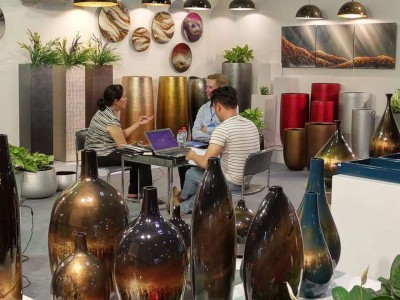
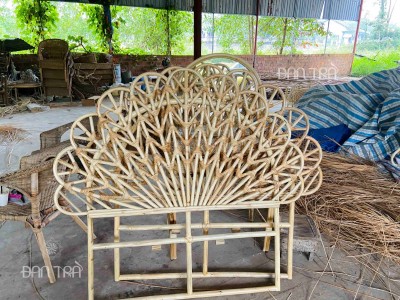
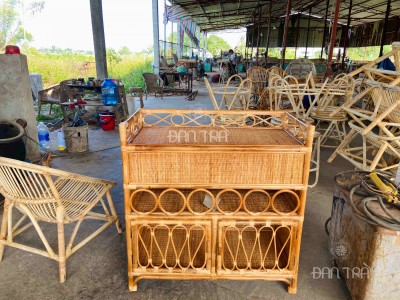
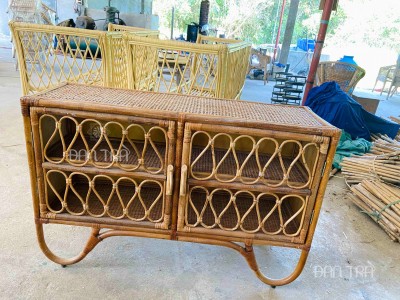
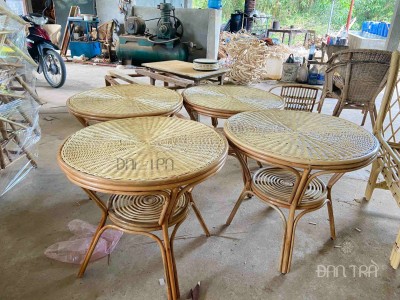
Leave a Reply
Your email address will not be published.